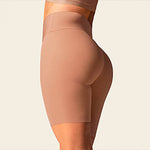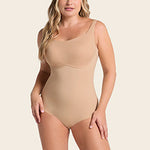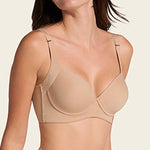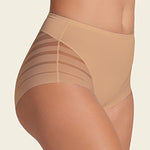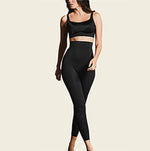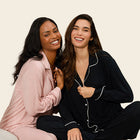Find Your New Favourite Pair of Leggings
Few bottoms are as versatile as a good pair of leggings. Whether dressed up with a cute tee and denim jacket or worn to the gym, high-waisted leggings are essential to helping you look and feel your absolute best no matter what's on your calendar. And thanks to their soft, stretchy quality, leggings help you lounge in style. Work from home? Yoga class? Running errands? High-rise leggings to the rescue!
Discover your new favourite leggings in this huge selection by Leonisa. We specialize in offering moisture-wicking styles for working out and chic options for work and play, all featuring trendy designs that suit your personality. From sporty capri leggings perfect for the gym to compressive faux leather leggings that you can style for a night out, these are the best-sellers you need to feed your legging obsession.
Find everything from mesh, faux leather and unique textures to basic black leggings in this selection!
High-Waisted Leggings to Flatter the Figure Leonisa is your resource for the comfiest and most flattering compression leggings that shape and highlight your figure. Shop a huge variety of booty- and waist-shaping leggings that help you create that perfect hourglass figure. Our high-quality shaper leggings are made with our incredible firm compression technology to flatten the tummy, slim the legs and make you feel amazing at the same time.
Rock our bum lift leggings as your new activewear go-to or style them with t-shirts and crewnecks to keep it casual. These comfortable high-rise options are designed to become your new favourite pair of everyday leggings, so they're meant to be super versatile. They're a breeze to style with boots or sneakers, depending on what you've got planned. Grab a pair with side pockets to stash essential cargo as you go about your day-to-day activities.
Leggings for Fitness, Lounging and More
Kick your activewear style up a few notches with a pair of capri or full-length leggings designed for bum-kicking workouts. Our yoga leggings are engineered to provide you with the flexible comfort and all-day support you need to crush all your fitness goals. Featuring compressive sweat-wicking fabric, a wide waistband that won't roll down and quick-dry fabric that keeps you cool and resists pilling, these are sure to become your new favourite leggings.
Looking for a pair of truly game-changing workout leggings that will help you push yourself to the next level? Check out our activewear leggings featuring a specialty fabric that eliminates odor-causing bacteria and conditions your skin at the same time. We make these super soft leggings with aloe vera particles, which are activated by your movement, to soften and moisten skin.
High-Quality High-Rise Leggings
No matter if you're looking to swap out the sweatpants for comfy and casual loungewear leggings or enhance your asanas with new yoga pants, Leonisa has the perfect options for you! Explore our complete collection to find luxe, trendy styles you won't want to take off.
